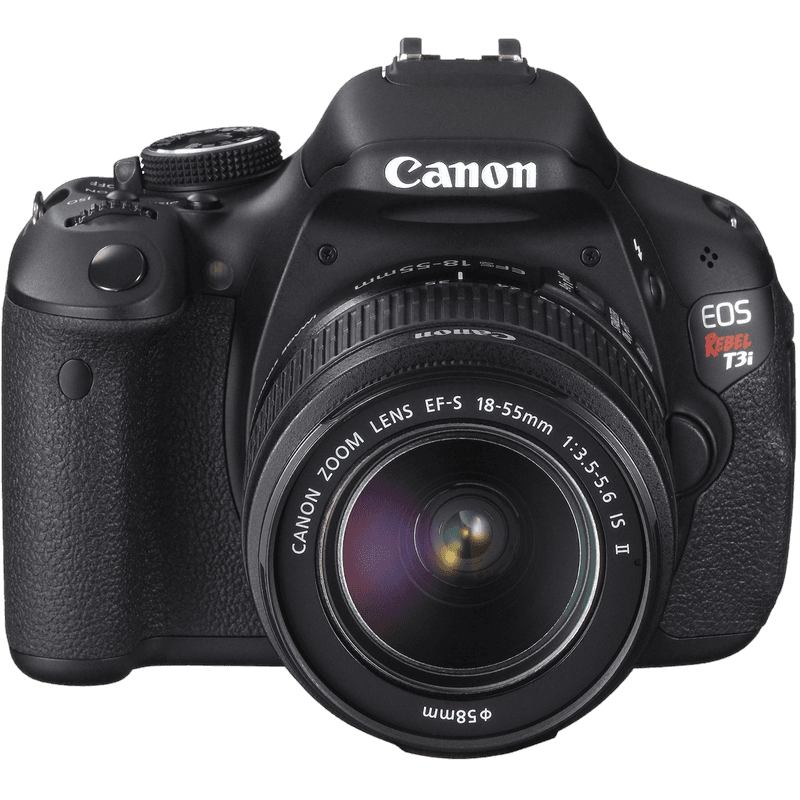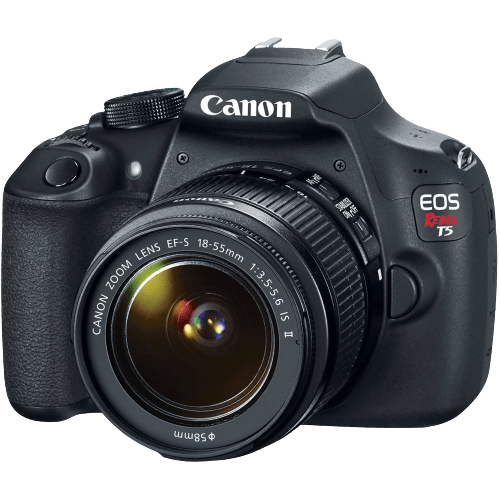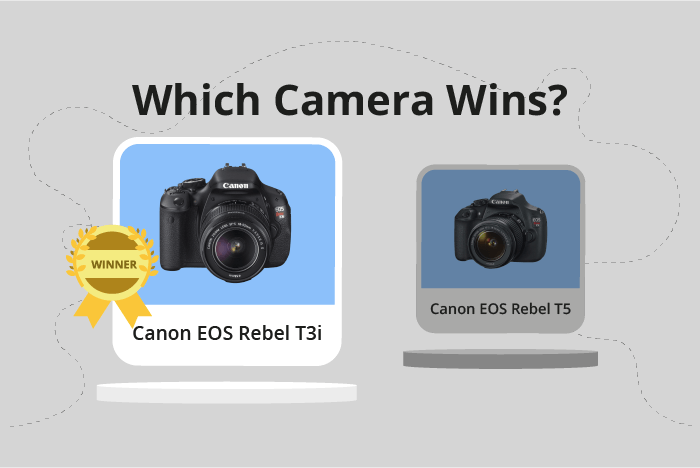Canon EOS Rebel T3i / 600D vs EOS Rebel T5 / 1200D Comparison
Canon EOS Rebel T3i / 600D

Canon EOS Rebel T5 / 1200D

The Canon EOS Rebel T3i / 600D narrowly edges out the Canon EOS Rebel T5 / 1200D with a score of 40/100 compared to 38/100. Both cameras are DSLRs with similar sizes and weights, though the T5 is slightly smaller and lighter. They were released in 2011 and 2014, respectively, with the T3i having a higher launch price of $850 compared to the T5’s $500.
The T3i’s higher score can be attributed to its better overall performance and features. However, the T5 has its advantages, such as its lower price and lighter weight, making it a more budget-friendly and portable option.
Considering the scores and specifications, the T3i is the better camera, but the T5 offers a more affordable and lightweight alternative for those who prioritize these factors.
Canon EOS Rebel T3i / 600D vs EOS Rebel T5 / 1200D Overview and Optics
The Canon EOS Rebel T3i / 600D wins in optics with a score of 40/100, compared to the Canon EOS Rebel T5 / 1200D’s score of 39/100. Both cameras share common specifications, such as 18-megapixel resolution, CMOS sensor type, Digic 4 processor, APS-C sensor size, Canon EF-S lens mount, and absence of image stabilization.
The T3i / 600D outperforms the T5 / 1200D in two significant aspects. First, it has a higher shooting speed of 3.7 frames per second, compared to the T5 / 1200D’s 3 frames per second. This difference allows the T3i / 600D to capture fast-moving subjects more efficiently. Second, the T3i / 600D has a better DXOMARK score for the sensor, with a score of 65 compared to the T5 / 1200D’s 63. This indicates that the T3i / 600D has a slightly better image quality and low-light performance.
On the other hand, the T5 / 1200D does not have any significant advantages over the T3i / 600D regarding optics. Both cameras share similar specifications, and the T3i / 600D outperforms the T5 / 1200D in shooting speed and sensor performance.
Given the comparison, the Canon EOS Rebel T3i / 600D’s better shooting speed and sensor performance make it the superior choice when considering optics. The Canon EOS Rebel T5 / 1200D falls short in these aspects, making it a less desirable option for those prioritizing optical performance.
Canon EOS Rebel T3i / 600D vs EOS Rebel T5 / 1200D Video Performance
The Canon EOS Rebel T3i / 600D and the Canon EOS Rebel T5 / 1200D have identical video scores of 43/100. Both cameras share common video specifications, such as Full HD maximum video resolution, 1920 x 1080 maximum video dimensions, and 30fps maximum video frame rate. Neither camera has built-in time-lapse functionality.
Despite having the same video scores, the T3i / 600D offers some advantages over the T5 / 1200D. This camera has an articulating screen, which allows for more flexibility in shooting angles and easier framing of subjects. This feature is particularly useful for videographers who need to shoot in tight spaces or from unconventional angles.
On the other hand, the T5 / 1200D is a lighter and more compact camera, making it easier to carry around and hold for extended periods. This can be beneficial for those who shoot videos while traveling or during long events. However, this advantage does not directly impact the video quality or capabilities of the camera.
After considering these points, it is clear that both the T3i / 600D and the T5 / 1200D offer similar video capabilities. The T3i / 600D’s articulating screen provides added convenience for videographers, while the T5 / 1200D’s compact and lightweight design makes it easier to carry and handle. Ultimately, the choice between these two cameras for video purposes should be based on the user’s specific needs and preferences.
Canon EOS Rebel T3i / 600D vs EOS Rebel T5 / 1200D Features and Benefits
The Canon EOS Rebel T3i / 600D is the winner in the features comparison with a score of 44/100, while the Canon EOS Rebel T5 / 1200D scores 36/100. Both cameras share several specifications, including a 3-inch screen size, no touchscreen, flip screen, GPS, WIFI, and Bluetooth capabilities.
The T3i / 600D outperforms the T5 / 1200D in screen resolution, offering 1,040,000 dots compared to the T5 / 1200D’s 460,000 dots. This higher resolution provides clearer and sharper images on the T3i / 600D’s screen, making it easier to review and edit photos.
The T5 / 1200D does not have any advantages over the T3i / 600D in terms of features. Both cameras have the same screen size, flip screen, and lack of touchscreen, GPS, WIFI, and Bluetooth. Therefore, the T5 / 1200D does not offer any improvements or additional features compared to the T3i / 600D.
Considering the features of both cameras, the Canon EOS Rebel T3i / 600D is the clear winner due to its superior screen resolution. This difference in resolution significantly enhances the user experience by providing clearer and sharper images for reviewing and editing. The T5 / 1200D, on the other hand, does not offer any advantages over the T3i / 600D, making it a less attractive option for those seeking a camera with advanced features.
Canon EOS Rebel T3i / 600D vs EOS Rebel T5 / 1200D Storage and Battery
The Canon EOS Rebel T5 / 1200D outperforms the Canon EOS Rebel T3i / 600D in storage and battery with a score of 27/100 compared to 24/100. Both cameras share similarities in storage capabilities, having one memory card slot each and accepting SD, SDHC, and SDXC memory cards.
The T5 / 1200D has a longer battery life of 500 shots, while the T3i / 600D lasts for 440 shots. This difference makes the T5 / 1200D more suitable for extended shooting sessions. The T5 / 1200D uses an LP-E10 battery type, while the T3i / 600D uses an LP-E8 battery. Neither camera supports USB charging.
Though the T3i / 600D has a lower score, it does not have any specific advantages in storage and battery over the T5 / 1200D. The T5 / 1200D is the better choice in this category due to its longer battery life, making it more convenient for photographers.
Alternatives to the Canon EOS Rebel T3i / 600D and EOS Rebel T5 / 1200D
Are you still undecided about which camera is right for you? Have a look at these popular comparisons that feature the Canon EOS Rebel T3i / 600D or the Canon EOS Rebel T5 / 1200D:

